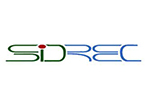Much has been discussed among policy stakeholders and business leaders about Malaysia being on the cusp of entering the Fourth Industrial Revolution (4IR). In particular, the healthcare industry is expected to see huge strides with its growing adoption of digitalisation. The Malaysian government even identified the healthcare sector in its National 4IR Policy as one of the key sectors that will contribute to the GDP and influence the growth of other sectors by bringing in new products and services through 4IR technologies1.
There are five foundational technologies that enable 4IR: Artificial Intelligence (AI), Internet of Things (IoT), Blockchain, Cloud Computing and Big Data Analytics, and Advanced Materials and Technologies. These foundation technologies are already present in the local healthcare system to a certain degree. We look at how digitalisation has greatly impacted the healthcare industry and what benefits they can bring to both medical professionals and consumers.
In 2021, Malaysia recorded a high internet penetration rate of 96.8%, along with a mobile phone usage rate of 98.7%2. These figures are very promising for telemedicine in the country, as it offers the hope of improved healthcare delivery, where patients don’t need to travel all the way to the hospital. They can quickly consult doctors, therapists, dieticians, and specialists remotely to get second opinions for non-emergency cases. Some hospitals even offer teleconsultation services and online appointments bookings through an app3.
Since its launch in 2017, Malaysian telemedicine start-up DOC2US has generated and processed more than 400,000 e-prescriptions by online doctors4. During the height of the pandemic that restricted public movement, DOC2US allowed medical practitioners to generate and send an e-prescription to a pharmacy as well as digitally sign it, reducing any potential errors of duplication or dispensation of wrong medication.
Telemedicine is also incredibly useful for patients with chronic diseases who live in rural areas, which may not always have a medical centre or clinic within close proximity. IoT technology can be used to monitor patients clinical and vital signs remotely or predict possible adverse events through early warning algorithms via remote monitoring or wearable smart devices that automatically detect health anomalies.
One such example is DoctorOnCall (DOC), a local digital health platform that came up with a mobile clinic connecting rural patients through IoT health screenings. The mobile clinic could perform various diagnostic procedures such as blood pressure or blood sugar levels5. Patients could then talk to doctors through video or voice calls. After consultation, patients may be sent home and wait for their medication to be delivered or be referred to Klinik Kesihatan Malaysia centres for further check-up. In the future, remote surgery may even be possible through 5G-powered medical robots.
1 National Fourth Industrial Revolution (4IR) Policy, Economic Planning Unit, Prime Minister’s Department, page 54
2 Department of Statistics Malaysia, ICT Use and Access by Individuals and Households Survey Report, Malaysia, 2021
3 https://themalaysianreserve.com/2021/04/12/digitalisation-is-the-future-of-healthcare/
4 https://www.digitalnewsasia.com/startups/doc2us-hits-216k-digitally-signed-e-prescriptions-12-month-period
5 https://www.doctoroncall.com.my/media/how-doctoroncall-is-digitalising-public-healthcare-so-rural-msians-can-access-it-too
With more medical data being made available today to healthcare practitioners, AI plays a major role in not only sorting out information but also making sense of it. Repetitive administrative tasks are reduced through automation, while certain diseases can be detected early through predictive modelling and preliminary diagnosis. For example, the Malaysia Retinal Reading Centre is developing AI algorithms to detect diabetic eye disease in various stages, allowing for early treatment6.
AI and integrated smart tech can also be extended towards IoT, which has led to the emergence of Internet of Bodies (IoB) technology. This is seen in the development of neurobotics in Hybrid Assistive Limb (HAL) as cybernic treatment, where AI and reconstructed neural signals allow patients to move connected artificial or biomechatronic body parts. Malaysia is in fact the first country in ASEAN to offer HAL treatment through the Tun Abdul Razak Rehabilitation Centre in Ayer Keroh, Melaka7.
In 2021, several hospitals in the region were affected by ransomware and data breaches, resulting in lost time and money8. Sensitive patient data is usually considered more valuable than credit card information, yet they don’t usually receive the same degree of attention or protection. Artificial intelligence and machine learning not only helps to detect signs of medical fraud but also malwares by analysing weaknesses in networks, protecting against cyberattacks that could leave hospitals and systems vulnerable.
6 https://www.theedgemarkets.com/article/cover-story-bringing-future-healthcare-malaysia
7 https://www.theborneopost.com/2019/05/14/malaysia-first-in-asean-region-to-offer-cyberdyne-hal-treatment/
8 https://techwireasia.com/2022/06/ransomware-attacks-on-healthcare-organisations-increased-94/
Electronic medical records (EMR) empower patients to play a more active role in taking care of their own health. It is easier for patients to present data to other healthcare professionals without having to fill out forms again or conduct long questionnaires. Doctors can quickly access a patient’s past medical history, allowing them to improve treatment and diagnosis by making data-based decisions. Over the past few years, several government hospitals and public health clinics have been using EMR systems for faster tracking and better handling of digitised patients’ records9.
Many private hospitals have also followed suit by not only digitising health records but also using AI and big data analytics to improve patient treatment through better diagnostics10. Digitalisation can also be used to improve operational efficiency and patient care. Real-time operations tracking system and automation allow some hospitals to improve turnaround times for room cleaning and patient discharge as well as medication supply to wards.
Integrating blockchain technology – a digital ledger system that records information and distributes it across a network of systems – could also help with more accurate data management and better tracking of drugs while reducing fraud or errors. DOC2US uses blockchain technology to provide a safer platform that protects patient medical data as well as allow for more secure sharing across clinics, hospitals, and laboratories11.
9 https://www.lowyat.net/2021/254032/electronic-medical-record-project-restart-rmk12/
10 https://www.theedgemarkets.com/content/advertise
/leading-way-redefining-healthcare
11 https://www.mhtc.org.my/2020/06/18/blockchain-exploring-its-potential-for-malaysian-healthcare/
Another exciting new technology that’s poised to grow in the country is 3D printing, also known as additive manufacturing. In 2020, Malaysia had 190 medical devices manufacturers with investments worth up to RM13.2 billion12. 3D printing is mainly used in providing precise medical supplies such as dentures, prosthetics, orthopaedic devices, and patient-specific replicas of organs and body parts. Its advantages in customisation and cost-effectiveness mean doctors save time and resources on finding suitable donors and tissue rejection.
One of the most notable examples of 3D printing in Malaysia took place in 2015, where a facial implant surgery using 3D printing was successfully conducted by Dr Mohd Nazimi Abd Jabar at UKM Medical Centre on a female patient involved in a car accident13. Years later when the Covid-19 pandemic hit the country, local 3D printing communities banded together to print thousands of face shields that were in short supply for frontliners.
Another application of 3D printing is surgical planning and training. Before a major operation, surgeons can scan and print a 3D anatomy model of the patient’s organ or body part for pre-operative planning to improve surgical outcomes. This practice has been replicated for complex surgeries such as the safe separation of conjoined twins. Due to the rapid emergence of wide range applications of 3D printing, the tech was added to the Critical Occupation List by the Ministry of Human Resources.
12 https://theaseanpost.com/article/future-healthcare-already-malaysia
13 https://www.mida.gov.my/mida-news/3d-printing-to-the-rescue/

Health is wealth and it’s necessary to constantly check that we are in good health. Fortunately, Malaysia has a strong local and global reputation for quality healthcare. Our modern healthcare system is even considered world-class by many medical tourists. If you need to go for a health screen, many hospitals offer a range of health screening packages for all ages and needs. OCBC Premier Banking is now partnering with one of the leading medical providers in the country to offer preferential pricing for your medical needs.





















